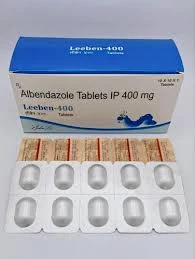- Afrikaans
- Albanian
- Amharic
- Arabic
- Armenian
- Azerbaijani
- Basque
- Belarusian
- Bengali
- Bosnian
- Bulgarian
- Catalan
- Cebuano
- Corsican
- Croatian
- Czech
- Danish
- Dutch
- English
- Esperanto
- Estonian
- Finnish
- French
- Frisian
- Galician
- Georgian
- German
- Greek
- Gujarati
- Haitian Creole
- hausa
- hawaiian
- Hebrew
- Hindi
- Miao
- Hungarian
- Icelandic
- igbo
- Indonesian
- irish
- Italian
- Japanese
- Javanese
- Kannada
- kazakh
- Khmer
- Rwandese
- Korean
- Kurdish
- Kyrgyz
- Lao
- Latin
- Latvian
- Lithuanian
- Luxembourgish
- Macedonian
- Malgashi
- Malay
- Malayalam
- Maltese
- Maori
- Marathi
- Mongolian
- Myanmar
- Nepali
- Norwegian
- Norwegian
- Occitan
- Pashto
- Persian
- Polish
- Portuguese
- Punjabi
- Romanian
- Russian
- Samoan
- Scottish Gaelic
- Serbian
- Sesotho
- Shona
- Sindhi
- Sinhala
- Slovak
- Slovenian
- Somali
- Spanish
- Sundanese
- Swahili
- Swedish
- Tagalog
- Tajik
- Tamil
- Tatar
- Telugu
- Thai
- Turkish
- Turkmen
- Ukrainian
- Urdu
- Uighur
- Uzbek
- Vietnamese
- Welsh
- Bantu
- Yiddish
- Yoruba
- Zulu
Dec . 11, 2024 04:20 Back to list
Tylosin Injection 2020 Overview and Applications in Veterinary Medicine
Tylosin 20 Injection An Overview of Its Uses and Applications
Tylosin is a macrolide antibiotic that is commonly used in veterinary medicine, particularly for the treatment of a variety of bacterial infections in livestock and poultry. The formulation containing Tylosin 20 Injection is a specific concentration that provides effective treatment options for veterinarians and farmers managing animal health. This article aims to explore the benefits, applications, and considerations associated with Tylosin 20 Injection.
What is Tylosin?
Tylosin is derived from the fermentation of the bacterium *Streptomyces fradiae*. It belongs to the class of antibiotics known as macrolides, which work by inhibiting bacterial protein synthesis, thereby stopping the growth of bacteria. Tylosin is especially effective against certain Gram-positive bacteria and some Gram-negative bacteria, making it a versatile antibiotic for treating infections.
Applications of Tylosin 20 Injection
1. Respiratory Infections One of the primary uses of Tylosin 20 Injection is in the treatment of respiratory tract infections in livestock. Conditions such as pneumonia or pleuropneumonia, which can be caused by pathogens like *Mycoplasma*, experience effective management with Tylosin due to its broad-spectrum activity.
2. Bacterial Infections in Livestock Tylosin is also used to treat a range of bacterial infections in cattle, swine, and poultry. Its antibacterial properties help control infections that can lead to significant morbidity or mortality in these populations, ensuring both animal welfare and productivity.
3. Feed Additive While Tylosin is delivered via injection for acute infections, Tylosin phosphate can also be included in livestock feed as a growth promoter and for the prevention of certain diseases. This application has drawn attention in discussions about antibiotic use in agriculture, as it raises questions regarding antibiotic resistance.
4. Prevention of Swine Dysentery In pig farming, Tylosin is often used as a preventive measure against swine dysentery, a costly disease caused by the bacterium *Brachyspira hyodysenteriae*. Administering Tylosin helps protect against outbreaks and minimizes economic losses for farmers.
tylosin 20 injection

Dosage and Administration
The administration of Tylosin 20 Injection is typically determined by the veterinarian based on the specific condition being treated, the species of the animal, and its overall health status. It is crucial to follow the dosage recommendations to ensure effective treatment and avoid potential side effects. The injection is usually given intramuscularly or subcutaneously, and the site of injection should be monitored for any adverse reactions.
Considerations and Precautions
1. Antibiotic Resistance One of the growing concerns surrounding the use of antibiotics like Tylosin in agriculture is the risk of developing antibiotic-resistant bacteria. It is essential for veterinarians and farmers to use Tylosin judiciously, adhering to prescribed dosages and durations of treatment.
2. Withdrawal Period Animals treated with Tylosin should observe a withdrawal period before they are sent for slaughter or milk production. This precaution helps ensure that the antibiotic residues diminish to safe levels, protecting consumer health.
3. Side Effects While Tylosin is generally well-tolerated, some animals may experience side effects, such as local irritation at the injection site or gastrointestinal disturbances. Monitoring the animals after administration is vital, allowing prompt action if adverse reactions occur.
4. Regulatory Compliance The use of Tylosin and other antibiotics is often regulated by governmental agencies to ensure safety and efficacy. Farmers and veterinarians should remain informed about regulations pertaining to antibiotic use in their region.
Conclusion
Tylosin 20 Injection serves as a crucial tool in veterinary medicine, particularly for managing bacterial infections in livestock. Its versatility and efficacy make it invaluable in promoting the health and productivity of animals. However, the responsible use of Tylosin is essential to prevent antibiotic resistance and ensure the safety of food products derived from treated animals. As the agricultural landscape continues to evolve, ongoing education about antibiotic stewardship will be vital in preserving the effectiveness of such important veterinary medications.
-
Guide to Oxytetracycline Injection
NewsMar.27,2025
-
Guide to Colistin Sulphate
NewsMar.27,2025
-
Gentamicin Sulfate: Uses, Price, And Key Information
NewsMar.27,2025
-
Enrofloxacin Injection: Uses, Price, And Supplier Information
NewsMar.27,2025
-
Dexamethasone Sodium Phosphate Injection: Uses, Price, And Key Information
NewsMar.27,2025
-
Albendazole Tablet: Uses, Dosage, Cost, And Key Information
NewsMar.27,2025













